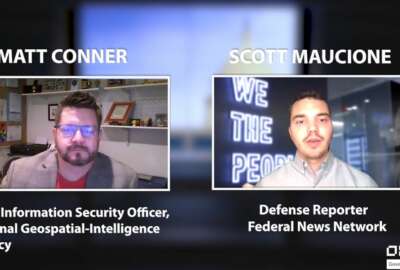Intel leaders pledge to reduce barriers, regulations for commercial GEOINT industry
U.S. spy agencies are increasingly turning to satellite imagery and other geospatial data available on the commercial market.
ST. LOUIS — Senior intelligence officials said they will continue to pivot toward adopting more commercial geospatial intelligence (GEOINT) products and loosening regulations, but acknowledged there are still security and resiliency concerns with the wholesale adoption of unclassified tools.
Spy agencies are increasingly turning to an expanding commercial GEOINT industry for information they previously obtained from their own internal sources, Stacey Dixon, principal deputy director of national intelligence, said at the GEOINT 2021 Symposium on Wednesday.
“Today we are balancing buying GEOINT capabilities from commercial companies and building custom satellites,” she said. “It is now a matter of policy to consider commercial imagery first, and this trajectory is set to accelerate.”
Dixon said the office of the director of national intelligence is committed to promoting the success of the American GEOINT industry, including by loosening commercial licensing restrictions for remote sensing services and analytics.
She added that the Biden administration is looking at the commercial space launch industry as a model.
“We want to pare down the constraints you face to only those that are absolutely necessary, particularly when it comes to competing on capabilities that are commercially available from others,” Dixon said. While lifting some restrictions will not be possible — because custom and classified GEOINT capabilities are still critical to helping us understand and confront core national security challenges — it should be possible to provide a unified clear response that will allow you to make the investments you need and want to make more quickly.”
Vice Adm. Robert Sharp, director of the National Geospatial Intelligence Agency, said the commercialization of GEOINT is “a central development in our relationship with industry.” NGA is expected to soon release an updated commercial strategy directing analysts to consider commercial information as “primary” sources, before they turn to government capabilities.
“We know we have to complement existing image resources with access to nontraditional commercial datasets and geospatial analytic services,” he said. “And we have deliberate efforts underway to do that.”
But as the IC looks to partner with commercial firms, officials also acknowledged agencies still can be tepid about carrying out traditional intelligence missions using commercially available technology.
“In some ways, I’m sure it seems like we in government are still getting used to this new reality,” Dixon said.
Security and reliability remain a sticking point. Dixon said discussions between intelligence community chief information officers and other executive-level officials about commercial technology often involve debates over the best information assurance policies.
“We were certainly talking about the need to make sure that our information and data is secure and safe, that we know where it’s coming from,” she said. “Something that we have confidence in, that has not been tampered with, or manipulated or influenced in any way, making sure that we are providing the information as we see it, keeping politics and other things out of that as we do our analysis.”
Despite those concerns, both NGA and the National Reconnaissance Office are increasingly turning to an expanding list of commercial companies for different services. Sharp also said NGA is not trying to compete with commercial companies that may sell GEOINT products directly to other government customers, rather than going through the agency.
“We’re interested in all sources of data that can allow us to meet mission needs as fast as possible,” he said.
With an ever increasing amount of data available from both government and commercial sources, Sharp said one of NGA’s biggest challenges is managing the vast amount of information. He said the agency is looking to work with firms that are experts at data integration.
“Leveraging automation, artificial intelligence, machine learning is a huge focus for us right now,” Sharp said. “We want to be able to produce automated observations that both our analysts and customers can easily use.”
Copyright © 2024 Federal News Network. All rights reserved. This website is not intended for users located within the European Economic Area.
Follow @jdoubledayWFED






